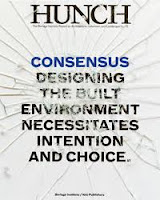Collaborative Governing - Individual Committment to Appropriate Consensus
-
- The Governance Dimension
- Partners who seek to collaborate must understand how
- to jointly make decisions about the rules that will govern their behavior and relationships;
- to create structures for reaching agreement on collaborative activities and goals through shared power arrangements.
- These ideas are at the heart of collaboration and encompass both
the negotiation and commitment processes
- Collaborative governance can be described as
participative decision making ;
shared power arrangements,
and problem solving .
Each of these terms implies
- a lack of authoritative structure or hierarchical division of labor ;
- an awareness that participants are not only directly responsible for reaching an agreement but must also impose decisions on themselves ;
- a willingness to accept that all participants have legitimate interests, such that outcomes “reflect group consensus, not coalitional or power politics” ;
- an understanding that this kind of governance emphasizes openness in information sharing, respect for others’ opinions, and potentially lengthy negotiations to reach agreement.
- Reaching agreements that are compatible with all interests
does not mean groupthink.
- Collaboration does not mean everyone has to agree on the best possible solution; it only means that they have
to be willing to support the decision once it is made.
- When parties come together to collaborate, they make choices that govern a variety of collective action problems implicit in joint decision making
- how to collectively develop sets of working rules to determine who will be eligible to make decisions, which actions will be allowed or constrained,
- what information needs to be provided,
- how costs and benefits will be distributed.
- The key to the success of these choices rests in participants’ willingness to monitor themselves and each other and to impose credible sanctions on noncompliant partners. When collaborative partners are unwilling to monitor their own adherence to the agreed-upon rules, the ability to build credible commitment is lost, and joint decision making is unlikely.
- A reputation for trustworthiness is a core factor that increases the likelihood of collective action. Closely related to the process of building credible commitment is the value of face-to-face communication and the creation of an “ethic of collaboration”, which allows partners to give each other the benefi t of the doubt while they build the reputations needed for joint decision making.
- As a process, then, governance in collaboration is not static, nor is there one universal way to go about creating “jointness” or 'buy-in'. Achieving a general consensus is the process of arriving at an equilibrium in which contest and conflict among partners still occurs, but only at the margins and within a larger framework of agreement on the appropriateness of jointly determined rules that ensure a collaborative environment. To arrive at this kind of equilibrium, public managers need to understand the shared responsibility that accompanies this form of governance when they engage in collaboration
When people and organizations are able to demonstrate a deeper appreciation for the interconnected nature of specific problems, they are more likely to collaborate. Instead of blaming particular partners , the stakeholders began to adopt collective responsibility for the problems they faced. This allowes them to focus directly on addressing the problem rather than on assigning individual responsibility. A shared vision and commitment to a supraorganizational goal allows them to move toward problem solving rather than problem blaming.
- Next - The Process of Collaborative Administration:







